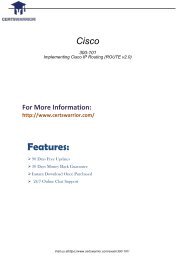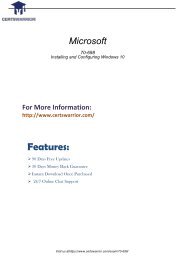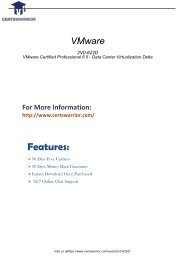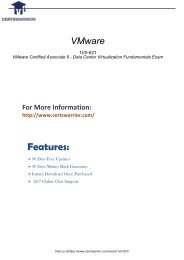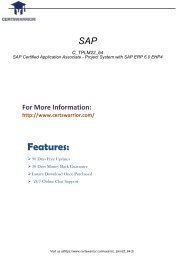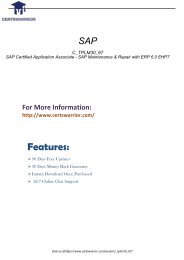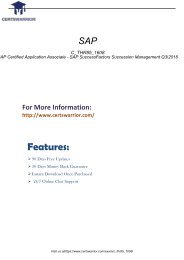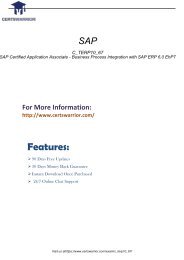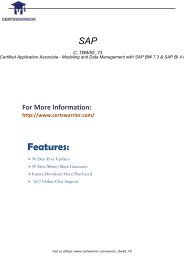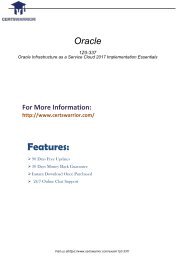70-464 Certification
Get high success rate in 70-464 Certification Exam with our exam PDF questions answers prepared by the authorized persons of Information Technology industry. For more info please visit here: https://www.certswarrior.com/exam/70-464/
Get high success rate in 70-464 Certification Exam with our exam PDF questions answers prepared by the authorized persons of Information Technology industry. For more info please visit here: https://www.certswarrior.com/exam/70-464/
You also want an ePaper? Increase the reach of your titles
YUMPU automatically turns print PDFs into web optimized ePapers that Google loves.
Case Study: 1<br />
Scenario 1<br />
Application Information<br />
Your company receives invoices in XML format from customers. Currently, the invoices are<br />
stored as files and processed by a desktop application. The application has several performance<br />
and security issues. The application is being migrated to a SQL Server-based solution. A schema<br />
named InvoiceSchema has been created for the invoices xml.<br />
The data in the invoices is sometimes incomplete. The incomplete data must be stored and<br />
processed as-is. Users cannot filter the data provided through views.<br />
You are designing a SQL Server database named DB1 that will be used to receive, process, and<br />
securely store the invoice data. A third-party Microsoft .NET Framework component will be<br />
purchased to perform tax calculations. The third-party tax component will be provided as a DLL<br />
file named Treytax.dll and a source code file named Amortize.cs. The component will expose a<br />
class named TreyResearch and a method named Amortize(). The files are located in c:\temp\.<br />
The following graphic shows the planned tables:<br />
You have a sequence named Accounting.InvoiceID_Seq.<br />
You plan to create two certificates named CERT1 and CERT2. You will create CERT1 in<br />
master. You will create CERT2 in DB1.<br />
You have a legacy application that requires the ability to generate dynamic T-SQL statements<br />
against DB1. A sample of the queries generated by the legacy application appears in Legacy.sql.<br />
Application Requirements<br />
The planned database has the following requirements:<br />
•All stored procedures must be signed.<br />
•The original XML invoices must be stored in the database.<br />
•An XML schema must be used to validate the invoice data.<br />
•Dynamic T-SQL statements must be converted to stored procedures.<br />
•Access to the .NET Framework tax components must be available to T-SQL objects.<br />
•Columns must be defined by using data types that minimize the amount of space used<br />
by each table.<br />
Visit us athttps://www.certswarrior.com/exam/<strong>70</strong>-<strong>464</strong>/



